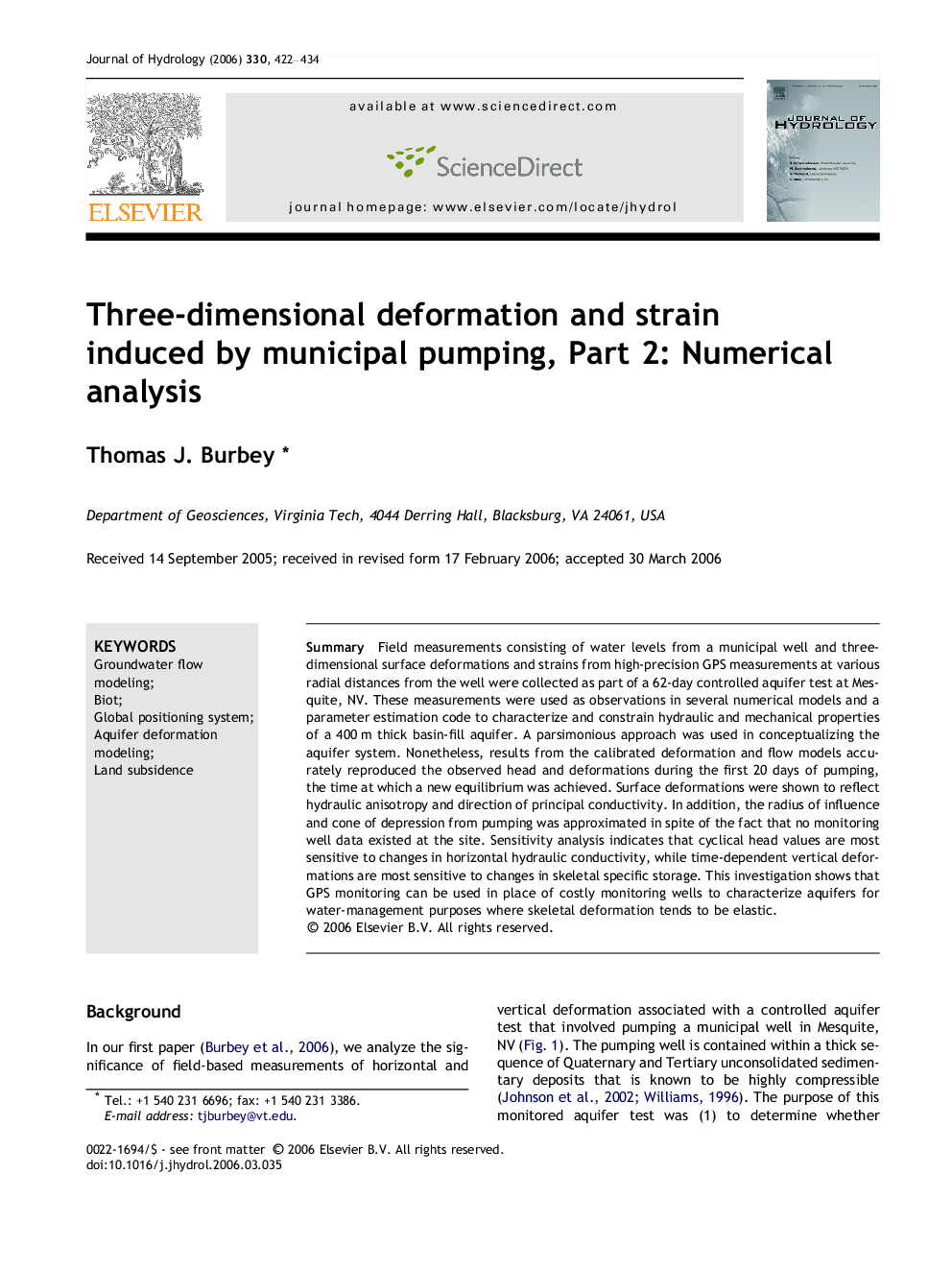| Article ID | Journal | Published Year | Pages | File Type |
|---|---|---|---|---|
| 4580415 | Journal of Hydrology | 2006 | 13 Pages |
SummaryField measurements consisting of water levels from a municipal well and three-dimensional surface deformations and strains from high-precision GPS measurements at various radial distances from the well were collected as part of a 62-day controlled aquifer test at Mesquite, NV. These measurements were used as observations in several numerical models and a parameter estimation code to characterize and constrain hydraulic and mechanical properties of a 400 m thick basin-fill aquifer. A parsimonious approach was used in conceptualizing the aquifer system. Nonetheless, results from the calibrated deformation and flow models accurately reproduced the observed head and deformations during the first 20 days of pumping, the time at which a new equilibrium was achieved. Surface deformations were shown to reflect hydraulic anisotropy and direction of principal conductivity. In addition, the radius of influence and cone of depression from pumping was approximated in spite of the fact that no monitoring well data existed at the site. Sensitivity analysis indicates that cyclical head values are most sensitive to changes in horizontal hydraulic conductivity, while time-dependent vertical deformations are most sensitive to changes in skeletal specific storage. This investigation shows that GPS monitoring can be used in place of costly monitoring wells to characterize aquifers for water-management purposes where skeletal deformation tends to be elastic.
